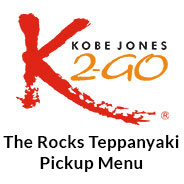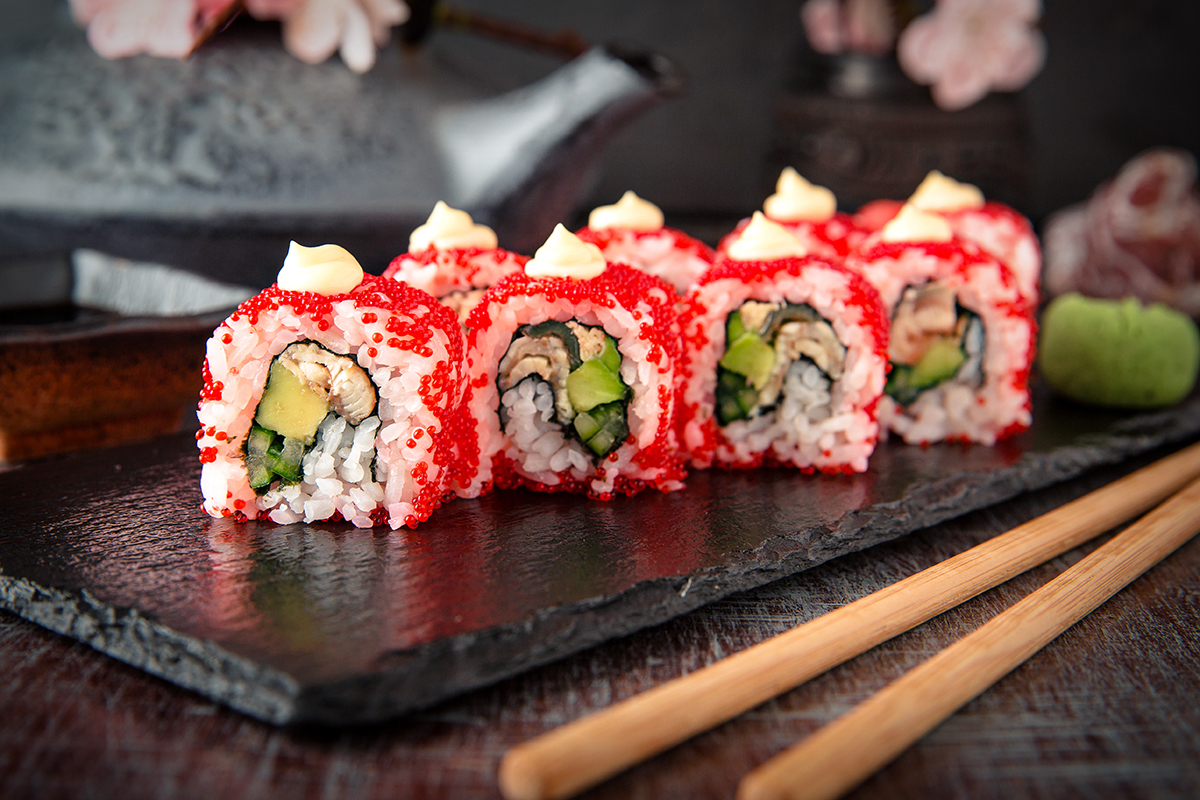There are so many differences between the cuisine coming from the East, and the food we eat in the Western world. East Asian cuisine, in particular that being from China, Japan, Korea and Taiwan, includes dishes featuring plenty of rice, noodles, soy beans and seafood, and showcases light flavours like soy and oyster sauce, chilli, and ginger. Although it’s difficult to create a single definition for Western cuisine, typically it compares with Asian cuisine in that it tends to use much larger serving sizes of meats and more dairy products in the cooking process. Over time, Asian migration to the West has seen Eastern inspired food becoming an increasingly popular dining choice for many gourmet (and non-gourmet) diners, often being reinvented and modified to suit the Western palate.
Japanese food in the West
Japanese food is among the most popular ethnic cuisine in the United States and Australia, alongside Italian, Chinese and Mexican. Japanese food was first imported into the US in the late 19th century with an influx of Japanese immigration at the time. It was not long before Japanese restaurants began popping up all over the US, in particular in New York, San Francisco and LA. However much of the food at the time was still considered too exotic for Americans, so restaurants mainly served Westernised dishes like tempura and teriyaki.
Japanese immigrants tended to stay confined to Japanese-American communities, mostly in Hawaii and California, and this is why we now see heavy Hawaiian and Californian influences over Japanese food consumed in the West today. For example, the California Roll was a purely American invention that does not exist in Japan. The sushi roll was radically changed to suit American palates, including introducing more indulgent flavors like avocado and cream cheese. Kobe Jones offers their own take on the California roll, called the ‘Lava Roll’, which features lobster baked in spicy cream cheese sauce, with a sprinkle of smelt roe, shallot, roasted sesame seed, soy glaze and fresh jalapeno. Hawaiian influences on Japanese food are also seen in the ‘Hawaiian Roll’ from Kobe Jones. This roll is made using marinated Saikou salmon, kingfish, tuna and snapped, rolled with burdock root and cucumber, and topped off with sweet poke sauce, shallots and soy glaze.
Beyond sushi, teriyaki and tempura dishes, ramen has recently become another popular Japanese dish consumed in the West. Ramen is a noodle dish served in a meat or fish broth, with typical toppings of sliced pork, dried seaweed and green onions. Kobe Jones serves a delicious and refreshing Crab Soba dish, with poached Alaskan crab on soba noodles, with cucumber, radish, carrot and sprouts, and a soy mustard dressing.
Other Asian Cuisines in the West
Western societies today also enjoy a wide variety of other Eastern cuisines from Chinese and Vietnamese, to Middle Eastern and Indian. As Asian immigrants from various different countries have migrated to the US, and other Western countries like the UK and Australia, they have brought with them their cuisine and cooking traditions. However, again, many Asian restaurants have endeavoured to broaden their appeal beyond ethnic patrons by modifying traditional dishes. Many chefs introduce modern and Westernised takes on traditional Asian cuisine, and even adopt novelties like fortune cookies to appeal to the Western market. Kobe Jones features a dish called ‘Wasabi Salmon Nachos’, which includes finely diced Saikou salmon mixed with wasabi and soy dressing, served on a bed of prawn nachos. Although nachos are a Mexican-inspired dish, they are a hugely popular in Western cultures, demonstrating how restaurants bring together Eastern and Western ideas and flavours, to appeal to Western patrons.
Another good example of this is Yakiniku, or as it is more commonly known, Korean BBQ. If you visit a Korean BBQ restaurant, you’ll find yourself being presented with bite size pieces of meat and vegetables to cook yourself on grills built into your table. This novelty largely appeals to the barbecuing culture that is heavily featured in Western cultures, in particular, here in Australia. Similar to this is teppanyaki, where the chefs prepare the meal on hot plates in front of their patrons. Kobe Jones have teppanyaki restaurants in both Melbourne and Sydney, where chefs dazzle their audience with their expert knife skills.
Why Asian food has become popular in the West
Not only is Asian food becoming increasingly popular due to its perceived trendiness, many Asian dishes appeal to Westerners due to being lighter and healthier than many other cuisines. While countries like the US and Australia are battling with health issues such as obesity and diabetes, finding healthier options is a desire for many. Asian dishes are generally smaller in portion sizes and rely on grains, fruits and vegetables, rather than meat. When meat is used, it’s usually offered up in much smaller portions, and the popularity of fish in Asian cuisines is seen as a health benefit due to fish being linked to cardiovascular health.
Try some Asian-inspired food today
With Western countries becoming increasingly adventurous in their dining choices, we will see more and more Asian-inspired dishes and restaurants popping up, with many chefs altering their dishes to suit all different types of taste preferences. And if this article has made your hungry for some Japanese-Californian inspired cuisine, be sure to check out the Kobe Jones restaurants in Sydney or Melbourne.






